<Conductors / Oshodi Oke>
Emeka Ogboh
1977, Enugu (Nigeria)
Lives and works in Berlin (Germany)
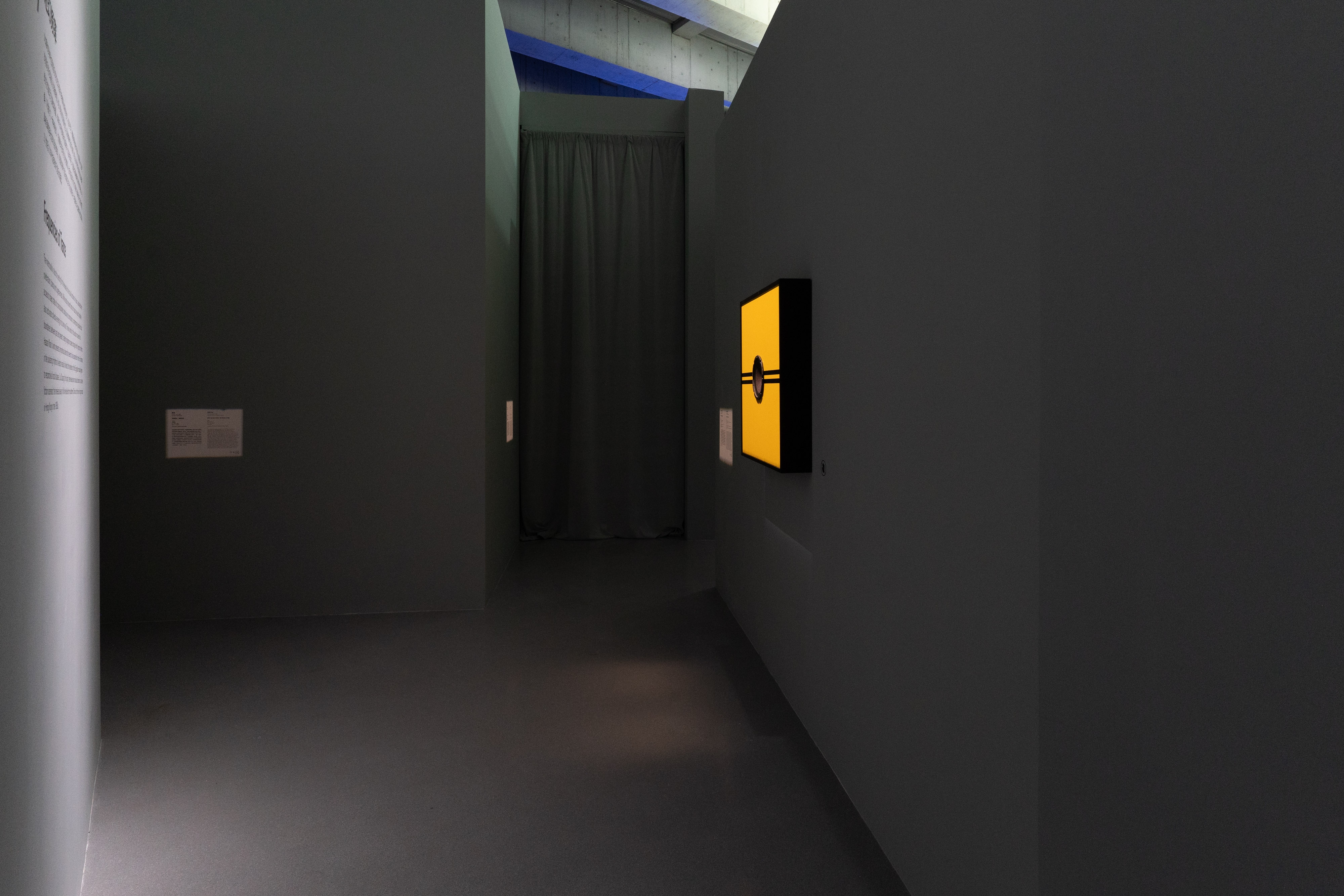
Conductors / Oshodi Oke, 2018
Sound installation
2 painted wooden reasoning boxes, 2 bare speakers diaphragms,
2 audio files WAVE
1min 3sec
Gift from Amis du Centre Pompidou, Perspective Group, 2020
Centre Pompidou, Paris
Musée national d'art moderne / Centre de création industrielle (Mnam / Cci)
AM 2020-282
The disparate nature of contemporary urban realities, shaped by migratory flows and the ongoing effects of globalisation, is at the heart of Emeka Ogboh's work.
What do we hear in this installation? A voice. Or rather the same voice divided in two, here and there. It speaks in numbers and names, in places that are everywhere, as if we were on a journey, in truth a journey of many. And yet nothing moves. As we move gently around the room, as we approach the boxes hanging like paintings on the walls, we realise that the voices are coming from there, that the black circles in the middle of the yellow wooden planks are loudspeakers, which we can see vibrating if we move a bit closer. Two lively, eloquent tableaux inhabited by a voice that travels from one place to another, crossing landscapes that we have to deduce from the names spoken.
On either side of the central circles, two parallel black lines divide the yellow wooden planks in half. This is the distinguishing feature of the buses that run between Lagos, Nigeria’s capital and a megalopolis port, and the neighbouring country of Niger. From Lagos to Niamey, the Niger’s capital, there are almost 1,200 kilometres of road and an entire country to cross. The voice is that of a bus driver. And we understand that this voice is our guide on this motionless journey. The names of the places being called out are the stages of the journey. For those who are used to making the journey, they are colourful images fed by memories. For those from elsewhere, they are words in a foreign language, Yoruba, but if we linger long enough, the meaningless chain becomes a litany, an involuntary case of sound poetry – Bernard Heidsieck’s La Poinçonneuse suddenly comes to mind, and the stations of the Paris metro are superimposed on those of the Nigerian buses.
- Read more about
- Log in or register to post comments
<The Cuckoo’s Nest>
Susan Philipsz
1965, Glasgow (United Kingdom)
Lives and works in Berlin (Germany)
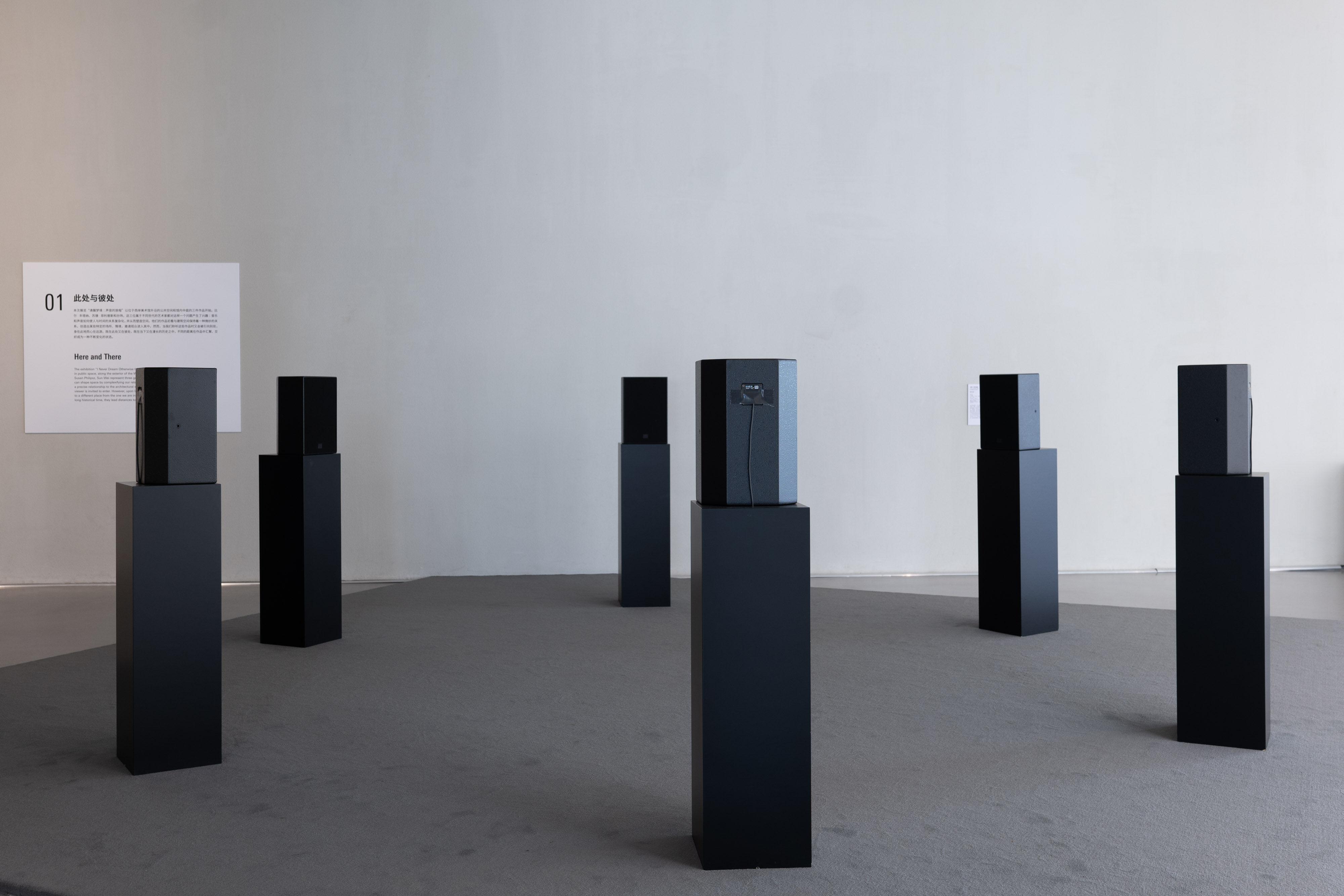
The Cuckoo’s Nest, 2011
Sound installation
6 satin black stands, 6 speakers, 3 equalizers, 3 amplifiers, 6 digital AIFF files
65 × 45 × 23 cm
7 min.
Gift of Rosa and Gilberto Sandretto, 2021 2021年由罗莎和吉尔伯托·桑德雷托赠予
Centre Pompidou, Paris
Musée national d'art moderne / Centre de création industrielle (Mnam / Cci)
AM 2021-583
Over the past two decades, Susan Philipsz’s work has explored the sculptural and emotional qualities of sound, creating subtle resonances between past and present. Intended for both indoor and outdoor spaces, The Cuckoo's Nest is presented here in a room at the West Bund Museum, after being created in a room at the Isabelle Bortolozzi gallery in Berlin and then installed in the Sapporo Art Park, a sculpture garden on the island of Hokkaido, Japan.
Six speakers arranged in a circle play the voice of artist and singer Susan Philipsz, who sings “a cappella” the six parts of a thirteenth-century English rota, “Sumer is icumen in” – which could be translated as “Summer has arrived”. Written in Middle English, this canon can be performed by four or six voices, depending on the vertical arrangement of the original score, with the different parts following each other continuously. Its “instructions”, which appear on the wall label, begin with the words: “Four companions may sing this round, but not less than three.” It is a canon, a polyphonic (and contrapuntal) form in which the melody sung by the first voice is then imitated by the others, each entering at a later time until they all overlap. For The Cuckoo’s Nest, Susan Philipsz recorded all the parts herself and projected them through six speakers, each corresponding to one of the voices in the round, taking the principle of imitation to its extreme. The text celebrates the arrival of the new season, inviting the cuckoo to sing and buds to blossom. The circumstances in which this piece was originally sung remain unknown, but it clearly had a ritual and collective dimension. Here, the work evokes a folk dance, the sound of which invites us to move around the exhibition space.
- Read more about
- Log in or register to post comments
<Silent Echoes in the Dachstein Glacier>
Bill Fontana
1947, Cleveland (United States)
Lives and works in San Francisco (United States)
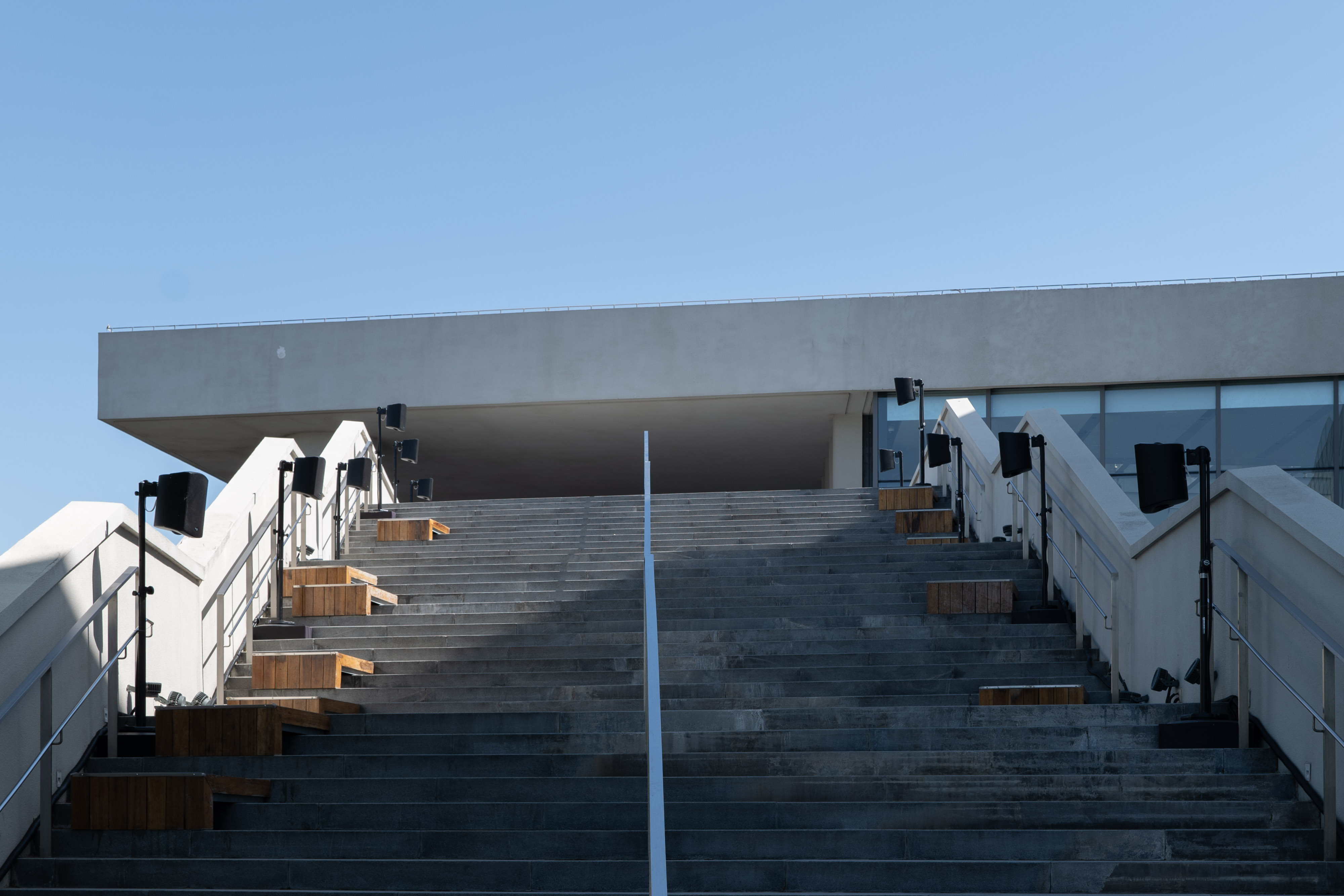
Silent Echoes in the Dachstein Glacier, 2024
Sound installation
Variable dimensions
Endless duration
IRCAM Commission
Co-production of the artist, IRCAM, and Centre Pompidou, 2024
Computer music design: Thomas GOEPFER
Sound diffusion: Luca BAGNOLI
Production: Bill Fontana Studio
In partnership with the Public Establishment in charge of the conservation and
restoration of the Cathedral of Notre-Dame de Paris
With the support of Hottinger Bruel & Kjaer, Friends of Notre-Dame,
and the Orange group
Following in the footsteps of John Cage, who expanded the field of music to include all sounds, without hierarchy, Bill Fontana developed his own concept of sound sculpture in the late 1960s. His work takes as its starting point the amplification of our ability to listen. To this end, he uses powerful vibration sensors to reveal and compose sounds that are inaudible to the naked ear. Working on specific sites, the artist is interested in what today’s soundscapes have to say, in this case about the impact of human activity on the environment.
Silent Echoes in the Dachstein Glacier entails a double displacement. The first is to reproduce the sound of the bells of Notre-Dame Cathedral in Paris in an ice cave in the Dachstein, a mountain range in the Austrian Alps. This first work can only be heard in situ, in the cave itself. Visitors are surprised to hear the sound of bells mixed with the dripping and cracking of the melting ice. But if they listen carefully, they can also perceive in these resonances the sounds around the cathedral that make the bells vibrate, and that they pick up without being aware of it: sirens, engine noises, birdsong…. Through them, a whole world is shifted into the Dachstein cave, and in the end,the two places are intertwined or coexist. To capture these sounds, Bill Fontana attached seismic accelerometers to the bells – which fell silent after the cathedral burned down in 2019 – that are sensitive to the slightest vibrations that pass through them, in a sense turning them into ears.
The second displacement captures this strange interweaving and projects it elsewhere, to a third place, in this case the façade of the West Bund Museum. This experience is entirely different. Passers-by or visitors to the museum will no longer hear one place in another but two places that have become a single continuum of sound, which they will only be able to distinguish if they take the time to analyse the surrounding image. In the heart of a melting glacier, bronze ears echo the sounds they heard in the middle of a big city. One place against another, which it is up to the listener to (re)reconcile.
- Read more about
- Log in or register to post comments
<I never dream otherwise than awake>
Emmanuel Lagarrigue
1972, Strasbourg (France)
Lives and works in Paris (France)
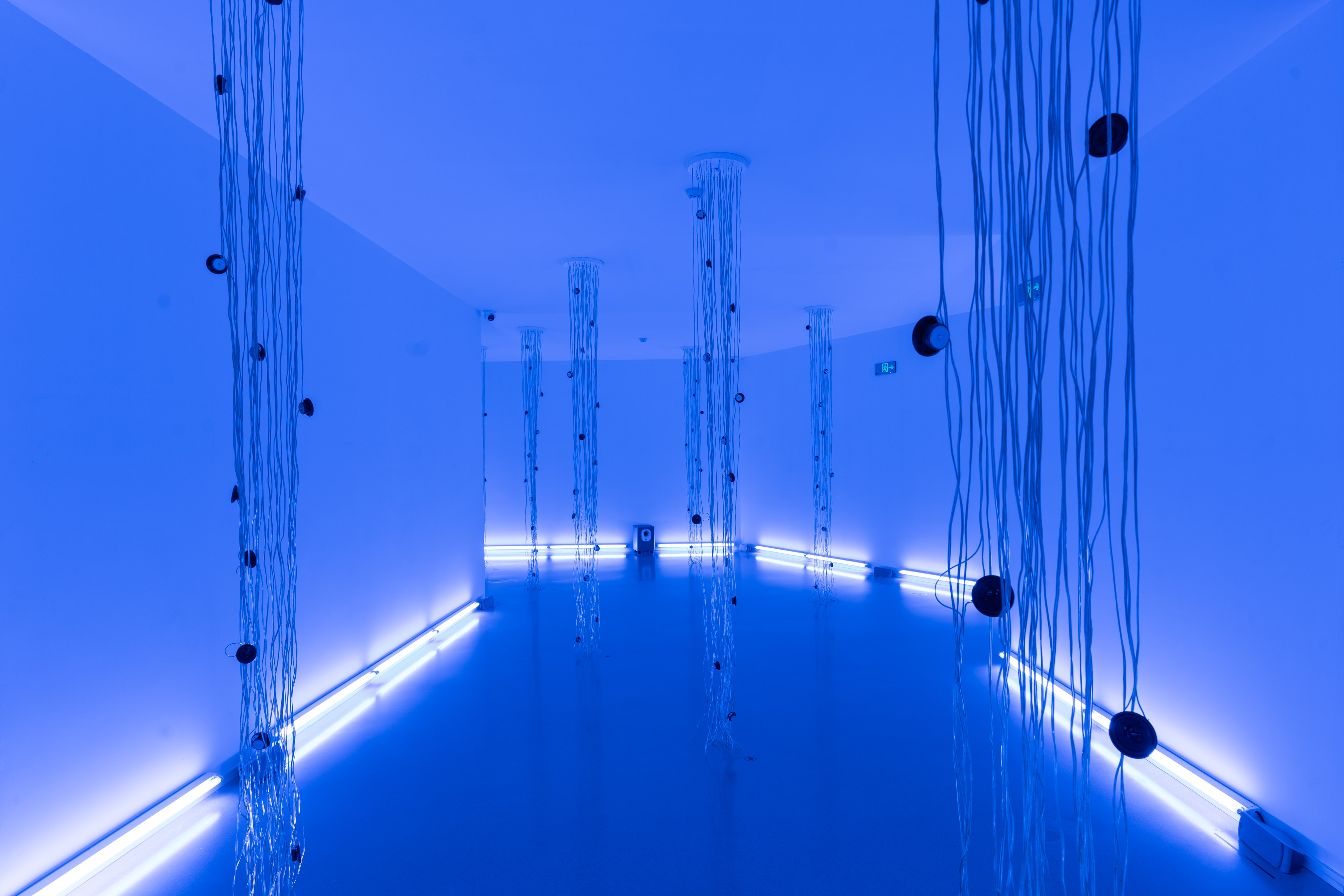
I never dream otherwise than awake, 2006
Sound installation
21 blue fluorescent lights strips, 8 columns of crystal cables, 110 speakers,
various audio equipment, 12 digital audio files AIFF, French version
6min 20sec
Gift from Amis du Centre Pompidou for the Contemporary art project, 2008
Centre Pompidou, Paris
Musée national d'art moderne / Centre de création industrielle (Mnam / Cci)
AM 2008-24
Emmanuel Lagarrigue is a visual artist, sculptor, composer and director who explores different forms of language and transforms them through the prism of memory and experience.
I never dream otherwise that awake (2006) is an immersive multimedia installation that explores the traces of language and collective memory linked to our inner lives. Songs that are hummed and deconstructed, underpinned by electro-acoustic vibrations, reveal a soundscape bathed in a blue hue evocative of dreams and self-abandonment.
The blue colour, emitted by neon lights, forms horizontal broken lines that guide the spectator's path through eight columns of crystal-coated audiovisual cables. Small loudspeakers hang from these cables, their membranes exposed like the eight voices we hear, fragmented by meticulous cutting and collage. These male and female voices, each performing an original musical composition, blend together, inviting the audience to listen, to become one with and to interact with each other. Added to this acoustic phenomenon is a second, spatialised musical composition from loudspeakers placed around the perimeter of the auditorium, amplifying the meaning of this sonic experience.
This sensory space also suggests another language, that of the poetic word, which recalls the words of Maurice Blanchot: "In the poem, language is never real at any of the moments through which it passes, for in the poem language is affirmed in its totality. Yet in this totality, where it constitutes its own essence and where it is essential, it is also supremely unreal."
- Read more about
- Log in or register to post comments
Sylvie Douala-Bell
<Jewel>
Hassan Khan
1975, London (United Kingdom)
Lives and works in Cairo (Egypt)
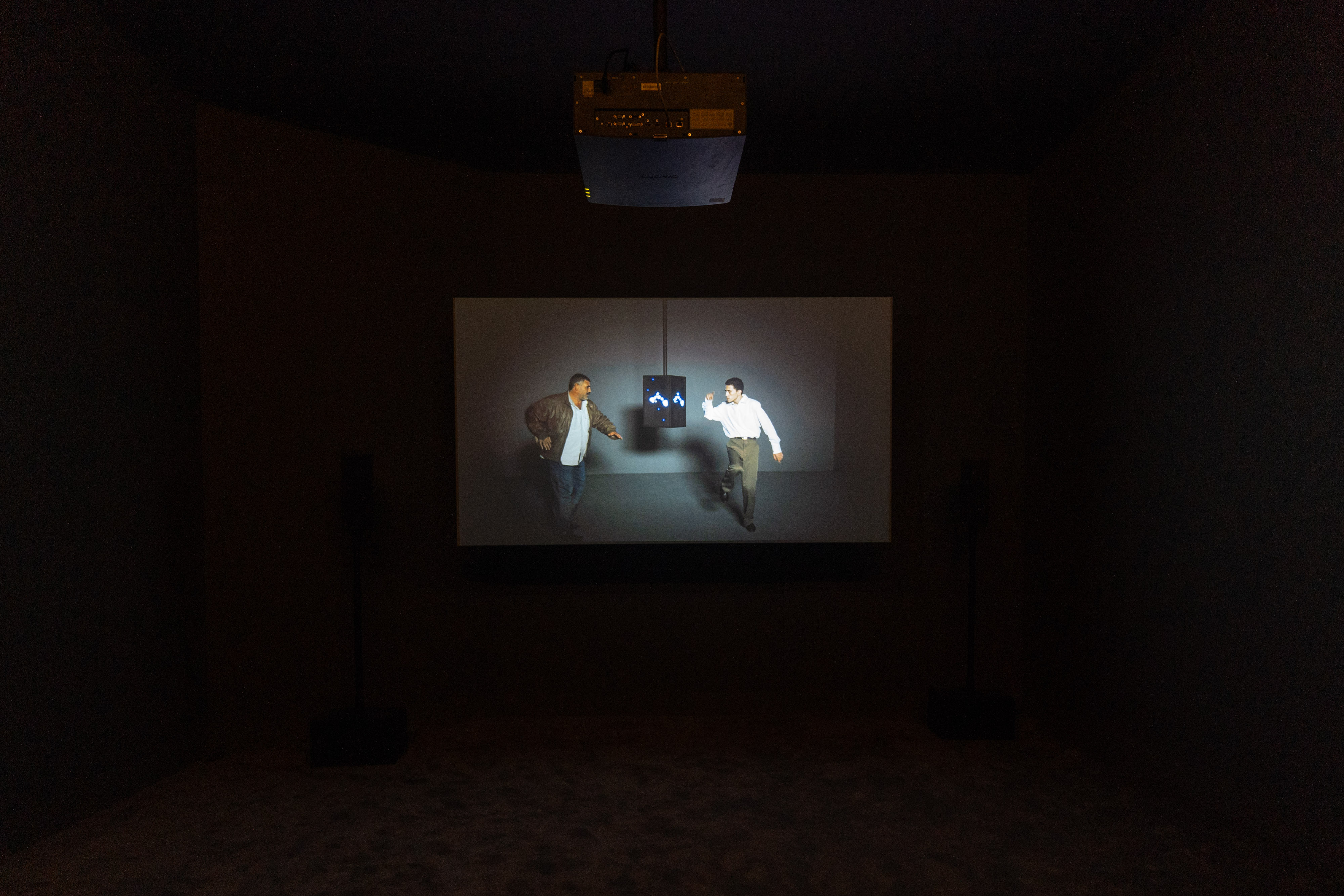
Jewel, 2010
Film installation
35mm film transferred to full HD video, color, sound
6min 30sec
Purchase, 2010
Centre Pompidou, Paris
Musée national d'art moderne / Centre de création industrielle (Mnam / Cci)
AM 2011-F25
The unique contemporaneity inherent in Hassan Khan’s artistic creation stems from his ability to ingeniously immerse the audience in multilayered spatio-temporal and textual contexts. His work is often a fusion of various elements composed of still and moving images, sculptures, objects, texts, music and performance. For Khan, these elements not only convey pure, personal feelings but also lead to multiple interpretations that allow one to extract cultural patterns and systematic structures from their complexity, while perceiving the characteristic synchronicity and coexistence in different facets of space and time. From macro narratives to individual lives, these elements fully embody the core spirit of "the personal is political".
Music is one of Hassan Khan's main creative mediums, mixed with high art, popular taste, pop culture and subculture. Techniques of sound generation and the results of these audio cultures are reproduced or recreated. This deliberate process allows the audience to assimilate into the scenario while retaining the ability to think dialectically, triggering reflection on the problems deeply embedded in identity, community, tradition, difference, variation, cultural symbols, time and the evolution of civilization.
At the beginning of Jewel (2010), Khan places the audience in the midst of deep oceanic darkness with an ancient creature- the anglerfish. This glowing fish gradually emerges from the darkness and sways with the music. Powerful high and low frequency sounds surge like waves pushing the tide of time. As the audience’s vision becomes clearer, the silhouette of this ancient creature emerges, surrounded by points of artificial blue light. The audience then sees a self-rotating technical object on the screen: an audio speaker. To psychedelic harmonies and rhythms, two modernly dressed men appear and dance around the speaker. The dance is inspired by Khan’s glimpse of everyday life as he once walked the streets of Cairo, and the music accompanying the performance is derived from the local popular music genre of electro-shaabi. Without the backdrop of the city streets, the dance around the speaker looks like a ritual, as if the two men are embracing the intangible unknown as they worship time, materiality and civilization.
- Read more about
- Log in or register to post comments
<Waterfall>
Wang Changcun
1981, Harbin (China)
Lives and works between Shanghai and Hangzhou (China)
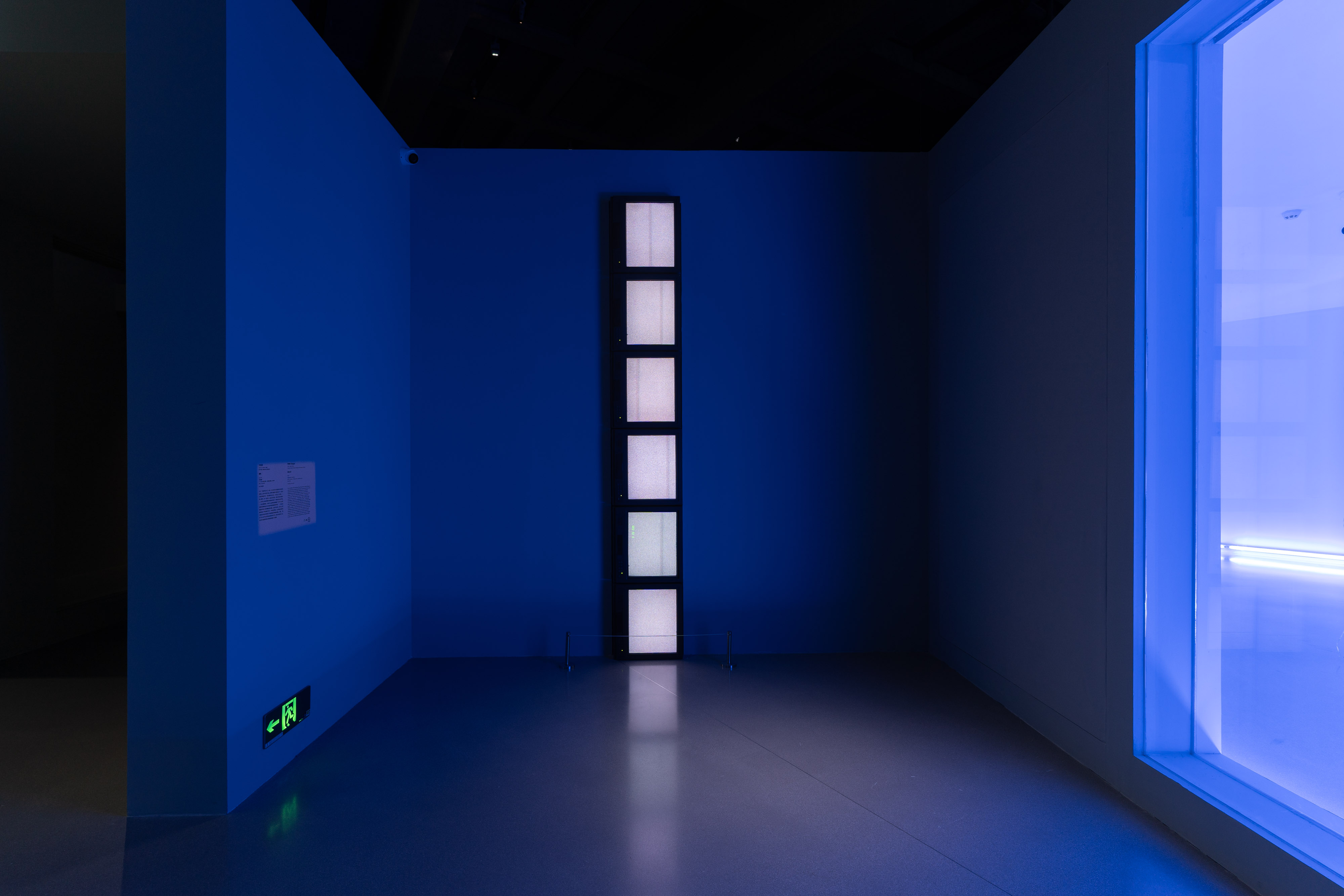
Waterfall, 2013
Audiovisual installation
6 CRT monitors, TV static noise, waterfall sound
6min 5sec
Courtesy of the artist
Wang Changcun, also known as ayrtbh, is a pioneering sound artist from China who uses computers to create artworks and performances. He masterfully manipulates natural, artificial and machine-made sounds using software, the internet, and computer-generated electronic technologies to create serendipitous and unexpected causalities for modern listeners.
Through coding, Wang modulates the relationships between people and objects with an understated yet sardonic sense of humor. He employs electronic sound technologies to transform the listening experience, allowing for the redefinition and learning of perceptual habits. For example, he once released a solo piano album called The Klone Concerts, whose title, cover design and acoustics were all parodies of Keith Jarrett’s legendary jazz album of solo piano improvisations, The Köln Concert. Wang claimed that the album had been recorded in a concert hall, but in reality, it was simulated by a random collage of computer algorithms. Wang later released Iterator, an album consisting of 100 tracks generated by running the same program 100 times.
In 2013, Wang created two works that echoed each other at Colgate University in New York: Cicada and Waterfall. Cicada used electronic devices to broadcast the resonant chirping of summer cicadas, making the winter woods of New York echo with humid tropical sounds. The concept of this dislocated and superimposed reality was then repeated in Waterfall, an installation in which Wang stacked six vertically arranged old-fashioned television monitors and played the pepper-and-salt noises they generate when no signals are received. At first, viewers may mistake them for the loud white noises emanating from the television sets, but on closer listening, it sounds more like a cascading waterfall in nature. From a listener’s perspective, the screens and snow sounds could create an artificial waterfall scene. It is worth noting that Wang used field recordings for the sounds in both pieces. While viewers can comprehend Waterfall in the context of Nam June Paik's concept of video media or of glitch art, the rabbit-duck-illusionist ambiguity and tension it creates may be even more interesting to explore.
- Read more about
- Log in or register to post comments
<Duett>
Francis Alÿs
1959, Antwerpen (Belgium)
Lives and works in Mexico City (Mexico)
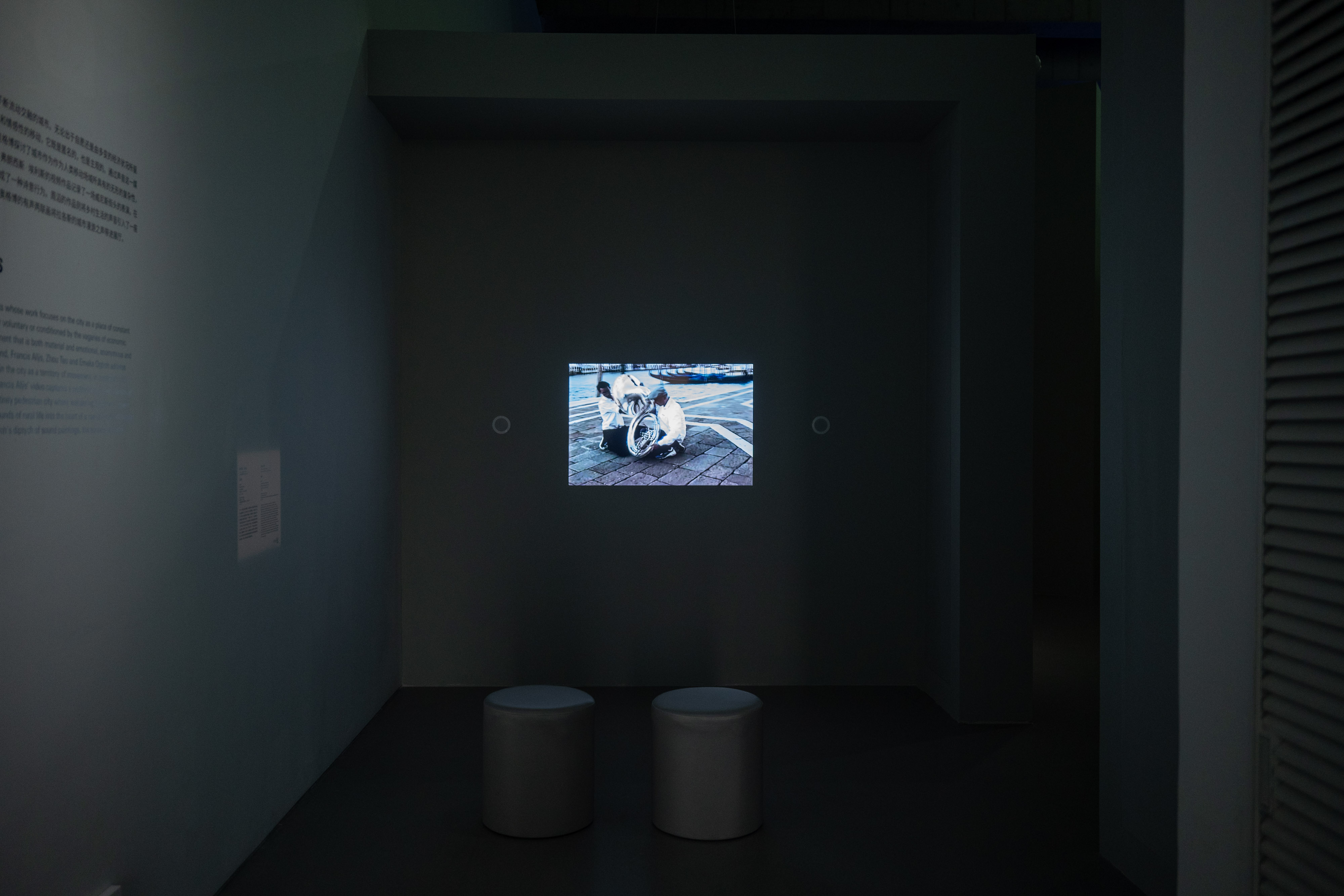
Duett, 1999
In collaboration with Honoré D’O
Video documentation of an action
Digital video, 4:3, color, sound
11 min.
Creative commons license
Centre Pompidou, Paris
Musée national d'art moderne / Centre de création industrielle (Mnam / Cci)
AM 2018-915
Francis Alÿs did not become an artist until the age of thirty. His work includes painting, drawing, photography and video. After moving to Mexico City in 1986, he traveled to numerous marginal cities in South America, North Africa and the Middle East, even visiting war zones, refugee camps and historical ruins. Alÿs has a background in architecture and worked in urban planning in Venice. As a result, his artistic practice has always been concerned with social issues and living space. While Alÿs’ videos have a documentary character, the minstrel that resides within him always looks at things from a refined and profound perspective, allowing the audience to fully experience the essence of life and survival in different environments and specific geopolitical circumstances.
Alÿs works are often collaborative. His most famous, Children's Games (1999-today), captures images of children from different regions playing in the public space; the viewers’ emotions and consciousness navigate the intimate yet shared situations created by the games children play, which also metaphorically implied the power structures hidden in practices of social spatialization, and the harmony or violence that could be brought about by its political nature.
In 1999, in Venice, Alÿs produced Duett, a video recording of a behavioral process that becomes a performance. This collaboration with artist Honoré d'O demonstrates the consistent connotations and trajectories of Alÿs’ work, including the starting point and end, randomness and rules. In the video, A and B set off from two sides of Venice, carrying the upper and lower parts of a tuba on their backs, and try to find each other. Only when they meet can the instrument be assembled and played. Alÿs treats this premise as a “musical composition”, and its completion depends on a certain degree of improvisation and chance. A and B stroll through the narrow streets of Venice, listening to the chirping of birds, boat engines and the din of the city. After about two days, A and B finally find each other and achieve the goal of the “ensemble”: After assembling the tuba, B plays a single note for as long as he can, while A holds his breath and applauds.
- Read more about
- Log in or register to post comments